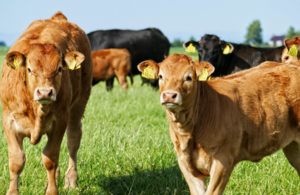Next phase of TB eradication strategy set out by Government
Views sought on targeted culling with increased use of badger vaccination

New proposals, which are part of delivering the next phase of the Government’s TB eradication strategy, have been set out in a consultation launched today (14 March).
Bovine tuberculosis is one of the most difficult and intractable animal health challenges that England faces today, causing devastation for farming and rural communities and leading to tens of thousands of cattle being culled each year.
The Government’s strategy to eradicate bTB in England by 2038 – published in 2014 – has followed the science to turn the tide on this insidious disease. The 12-month period ending September 2023 saw the number of new bTB breakdowns in cattle down at a near 20-year low. The latest peer-reviewed evidence from the first 52 areas where badger culling was conducted also shows a reduction in rates of bTB breakdowns in cattle down on average by 56% after four years of culling.
While these gains are significant, we must continue to drive down disease levels across England using an evidence-led approach and deploying all tools at our disposal.
While the majority of our disease control measures focus on cattle, the proposals set out today, which are subject to a five-week consultation, will retain badger culling as an option in targeted parts only of the High-Risk Area and Edge Areas, including much of southwest and central England, where there are high levels of infection in cattle, and where evidence suggests badgers are part of the problem in the spread of disease to these herds.
Culling would continue in these targeted areas until the disease situation has been deemed to have improved, following an annual review by the UK’s Chief Veterinary Officer. At this point, badger vaccination would be used to ensure the results achieved through culling are maintained. This sets out a clear exit strategy to non-lethal control preventing the return of disease in these areas.
The strategy builds on our investment in wider scale badger vaccination, which is now much more of a reality, with more farms involved in vaccination programmes than ever before, including in areas where badger culling has ended.
Environment Secretary Steve Barclay said:
“Bovine TB has taken a terrible toll on farmers, leading to the loss of highly prized animals and, in the worst cases, valued herds.
“There are no easy answers in the battle against TB, but badger culling has proved highly effective and needs to remain a key part of our approach.
“Our strategy has led to a significant reduction in this insidious disease, which we will continue to cull in areas where the evidence confirms it is required, as well as making use of vaccinations.”
UK Chief Veterinary Officer Christine Middlemiss said:
“Our strategy to eradicate bovine TB in England is turning the tide on this disease with the lowest number of new bTB breakdowns in nearly twenty years. We are making good progress to eradicating the disease by 2038 as we have committed to do.
“The proposals set out today will ensure this downward trend continues, and all culling decisions taken under the new targeted approach will continue to be led by the very best scientific and epidemiological evidence.”
The consultation also seeks views on Defra assuming the licensing authority role for licences issued under the policy along with the intention to reduce the administrative burden placed on farming groups delivering badger culling and vaccination through the use of a single organisational licence.
Views are also sought on options for publishing additional information about animal and herd level bTB risk – for example, the most recent TB test completed in the herd - to help those purchasing cattle to factor in such risks when sourcing new stock.
Further information
- The existing policy of intensive and supplementary control will end by January 2026.
- Herd incidence rate is the number of new breakdowns per 100 herd years at risk. The herd incidence rate is calculated as the number of new herd incidents (breakdowns) detected during the reporting period divided by the total time that herds under surveillance during that period were at risk of infection.
- The High-Risk Area covers much of the south-west and central England from Cornwall to Dorset and then north to Staffordshire.
- The Edge area is a band of counties bordering the High-Risk area.
- The policy for identifying Low-Risk Area hotspots continues, as consulted on in 2018 and already implemented through the published guidance to Natural England.
- In 2022, a total of 22,084 cattle were culled due to TB infection.